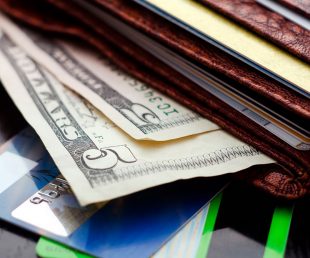Philadelphia has an embarrassment of riches when it comes to world-class dining, arts and entertainment, leisure and history — but what makes it great also makes it expensive for the prospective home buyer.
In central Philly neighborhood Chestnut Hill, the median home price currently sits at $446,000 according to Trulia.com’s real-estate heat maps. Homes in other parts of the city reach up into the $500,000—$700,000 range.
Less competitive housing markets outside of the city core are luring couples looking to start or grow their families to the best Philadelphia suburbs and fringe cities.
“The market is hot everywhere right now. We have listings that have been getting multiple offers over asking, and have also been on the other side of that with buyers,” says Christopher Thude, a local real-estate agent for RE/MAX Access. “There’s just not enough inventory and if you price it correctly it should sell quickly.”
This new reality is forcing homebuyers to set their eyes on more family-friendly cities and suburban Philadelphia. As they’re finding out, they can find an affordable, comfortable home — often far bigger and with a better quality of life — than they can for the same money in Philly, while still being close enough to get their city fix in when they need it.
HOUSING COST CONSIDERATIONS
Real-estate experts say homebuyers should expect to spend between $300,000 to upwards of $1.5 million on a new home in Philadelphia, depending on the style of housing as well as the location.
By comparison, housing outside of the city can be more affordable but not much. In Penn Wynne, about a 30-minute drive from downtown Philly, a colonial-style single family brick home goes for $545,000. Twenty-one miles out of the city in Media, PA, a comparable home is $396,325. And, if you don’t mind driving even further out (about 68 miles north of Philly, to be precise), a townhouse in the artists’ enclave of Easton, PA will cost you $180,000. It’s true that some of these prices are about what you’d expect to pay in Philadelphia proper. The difference often comes down to quality of life.
Plus, living in Philadelphia suburbs — or in another town altogether — doesn’t mean giving up all the cultural experiences and diversity that make cities so attractive. For instance, the Philadelphia metro region was recognized as one of the top LGBT friendly cities in the U.S., and many smaller towns have annual festivals and seasonal events. Affectionately dubbed “Everybody’s Hometown,” Media, PA prides itself on community, diversity, and neighborliness. And with amenities ranging from music festivals to scenic arboretums, this town will dispel concerns about a sleepy existence away from the city.
During the summer in Media, the “Dining Under the Stars” event can transport you from the Pennsylvania suburb to piazzas and cafes in Europe. “The whole street gets shut down and all the restaurants have tables set up out on the main street for dinners. It is absolutely packed.” says Thude.
COMMUTING FROM A FAMILY-FRIENDLY CITY
Lana White and her young family called Philadelphia home until she had her second child. She and her husband worked in the city raising their daughter, but by the second pregnancy they were toying with the idea of suburban living with no-stress parking.
“To transport the two children and stroller and look for parking became a pain point,” says White, who is in her 30s. “Even though we both had jobs in Philadelphia, and it is a drivable city, once the car is parked it became a question of, do you want to move it?”
Just over a year ago they moved from a south Philly row house into a colonial-style home with two-car garage in New Hope, PA, about 40 miles northeast of Philly. Their work commutes jumped from 10 minutes to over an hour with the move, but that’s about the biggest annoyance to date, says White. “The commute is the only thing we struggle with because we live in a town with really good restaurants and boutiques so we aren’t missing that.”
In addition to an eclectic mix of restaurants and shops on Main Street, residents in New Hope enjoy easy access to the Bucks County Playhouse. This famous theater has boasted performances by Robert Redford and Angela Lansbury and continues to host fantastic shows year-round to the delight of visitors and neighbors.
SUBURBAN PHILADELPHIA SCHOOLS
Three years ago, Elisa Ludwig and her husband moved from Philadelphia’s East Falls area to Penn Wynne, lured by quality public schools for their five-year-old son.
The suburbs and fringes of Philadelphia offer a lot of options for quality schooling, particularly for elementary schools, according to realtor Holly Mack-Ward of Coldwell Banker Preferred.
For Ludwig, Penn Wynne was exactly what she wanted for her young family. “There are things to walk to and tons of parks plus a Blue Ribbon School my son will be able to attend,” she says.
HEAD TO THE FRINGES FOR A BETTER LIFESTYLE
There are a lot of bonus perks to living outside of Philadelphia too. For instance, Ludwig notes there are a collection of small businesses and decent restaurants nearby. “We thought we would give stuff up, but our neighborhood now is more diverse.”
Some of the best Philadelphia suburbs and fringe cities include Collingswood, NJ — just six miles east of City Center Philadelphia, with antique shops, green festivals and jazz. Meanwhile, residents in Haddonfield, NJ residents enjoy a bustling downtown with 200 shops and galleries plus a mass transit station. Towns like Glenside, PA (population 8,000) offer easy commutes to Philadelphia, New York City and the Jersey shore.
For Lana White, moving to the family-friendly fringe city Port Hope has paid off. “It is a better quality of living. We have a yard and a safe area for them to play. Having that peace of mind is invaluable,” she says. And the kids seem to like it, too: “The day we moved in our son went out and found friends,” says Ludwig. “It was very magical.”
![]()


